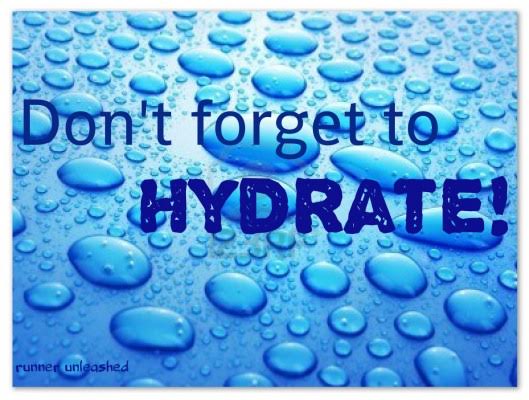 BY EMMET RUSHE: The summer has finally arrived.
BY EMMET RUSHE: The summer has finally arrived.
This last week has seen fantastic weather with temperatures reaching as high as 27 degrees in some parts of Donegal.
Long may it last.
With the improvement in weather come the increased desire to be active.
More and more people are getting the trainers on and hitting the roads and making the most of the sunshine, and who can blame them?
Walking, jogging, Running, cycling, fitness classes are being taken outside to get our yearly dose of vitamin D.
With the increase in temperature and activity also comes an increase in perspiration.
The importance of hydration shouldn’t be overlooked whenever you increase your activity levels.
Water is the most essential component of the human body as it provides an important role in the function of cells.
More than half of the human body is composed of water, and it is impossible to sustain life without it.
Exercise can lead to substantial water and electrolyte loss from sweat leading to dehydration. There can be huge differences in fluid loss ranging from person to person with regard to sweating.
The type of exercise, the intensity of the exercise, the duration of the exercise, the weight and fitness levels of the person involved in the exercise, all have an impact on the levels of perspiration and fluid loss.
If water and electrolytes are not replaced from these losses, the athlete will have a decrease in performance and perhaps an adverse effect on his or her overall health.
Thirst is a signal that your body is headed toward dehydration and it is important to drink before you feel thirsty and to drink throughout the day.
However, thirst is not a good indicator of hydration and should not be used to monitor hydration status.
One way to check your hydration status is to weigh yourself before and after exercise.
Comparing your body weight before and after exercise can be used to estimate your sweat loss and your fluid requirements.
Any weight loss is likely from fluid loss, so drinking enough to replenish these losses will maintain hydration.
The table below shows us that over a one percent loss in body weight indicates dehydration and over five percent indicates serious dehydration.
- % Body Weight Change
- Well Hydrated -1 to +1%
- Minimal Dehydration -1 to -3%
- Significant Dehydration -3 to -5%
- Serious Dehydration > -5%
Another simple way to judge hydration is to use the urine colour test chart.
A large amount of light-coloured urine means you are well hydrated. The darker the colour, the more dehydrated you are.
HYDRATION BEFORE EXERCISE
Check your hydration status before exercise because there is a wide variability in fluid needs for each person.
Use the chart above to determine where you are in regards to your hydration levels.
Drink 250-350ml of water or sports beverage at least four hours before exercise to ensure hydration.
Drink 450-600ml of water 10-15 minutes before exercise starts.
HYDRATION DURING EXERCISE
Sip on 100-200ml of water every 15- 20 minutes when exercising for less than 60 minutes.
Sip on a further 100-200ml of a sports beverage (5-8 percent carbohydrate with electrolytes) every 15-20 minutes when exercising greater than 60 minutes.
Do not drink more than one litre/hour during exercise.
HYDRATION GUIDELINES AFTER EXERCISE
Obtain your body weight and check your urine to estimate your fluid losses.
The goal is to correct your losses within two hours after exercise.
Drink 600-700ml of water or sports beverage for every one pound lost.
While an ordinary workout may not require electrolytes post workout, those participating in longer and more intense periods of exertion, such as running a marathon or going through a particularly intense workout, will benefit from electrolytes.
Sports drinks, electrolyte tablets or powders, or coconut water can all provide a good source of electrolytes post workout.
Fruit and vegetables are another great way to help with your hydration levels.
They can be a good source of fluids along with your regular water intake and they also improve the vitamins and mineral content of your diet.
Bananas are a great source of potassium and are a great way to refuel during a long workout.
Finally, if you feel dizzy or lightheaded during your workout, it can be a sign of slight dehydration.
When there’s not enough water in the blood, both blood volume and blood pressure drop, resulting in dizziness.
If this happens, stop what you are doing and sip on water or a sports drink and it may be best to leave the session until another day when you are properly hydrated.
Keeping well hydrated is a great way to improve your training sessions and your performance.
With the summer on its way and the good weather hanging around for a while, if you are intending on getting more active, remember the tips above and you will be having a safe and hydrated workout.
#TrainSmart
if you would like any more information on this or any other subject be sure to follow me through the link below.
https://www.facebook.com/Rushe-Fitness-120518884715118/
Tags:





